Our research
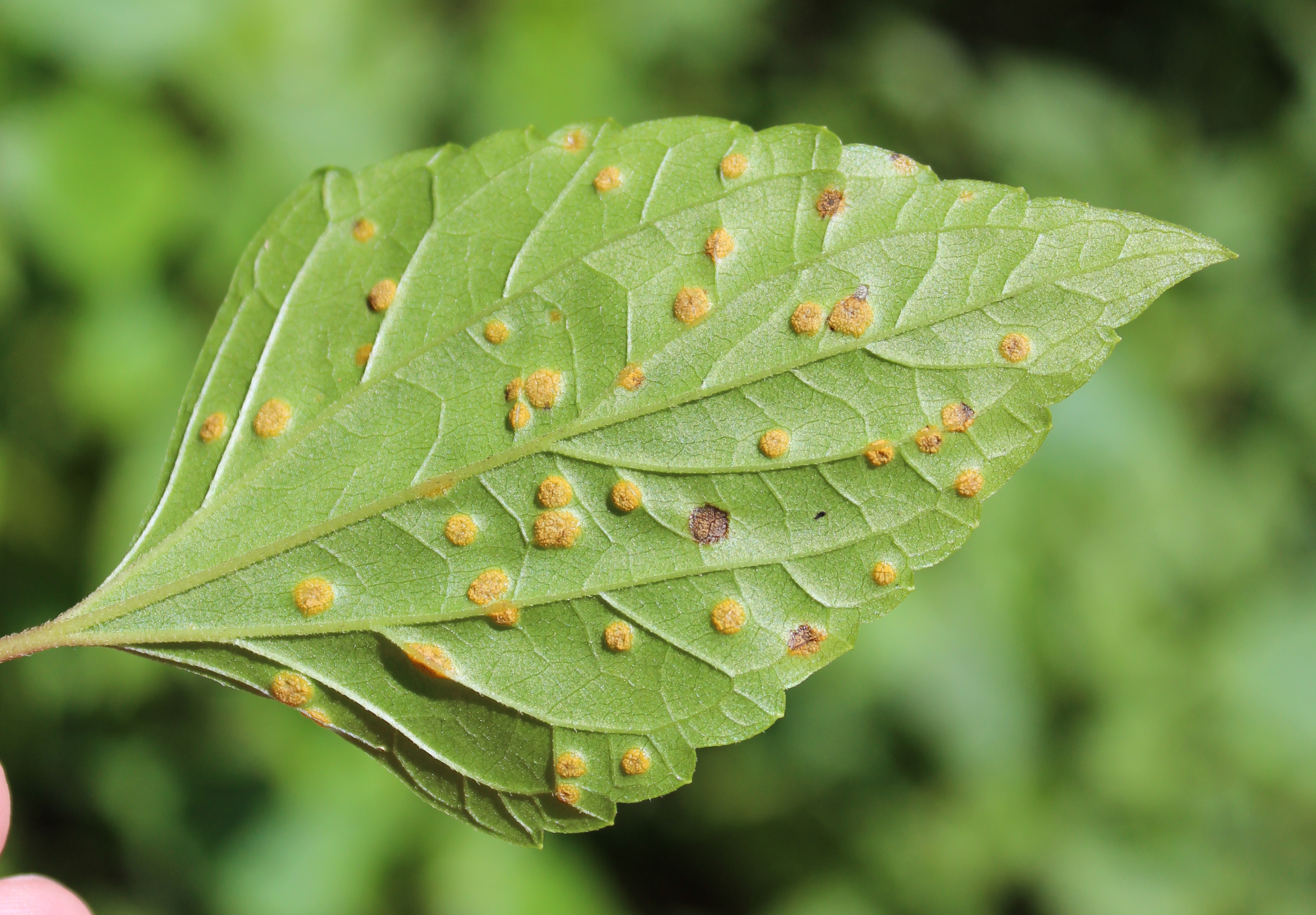
One leave of crofton weed infected by the crofton weed rust fungus
A Crofton weed leaf infected by rust fungus (photo: Karen Turner).
Following extensive testing, the rust fungus Baeodromus eupatorii (ex. Mexico) was approved in May 2014 for release in Australia for the biocontrol of Crofton weed. It infects young leaves, petioles and stems of Crofton weed. The fungus was first released at a handful of sites on the NSW South Coast in winter-spring 2014. Within 6–12 months of these releases, it had caused extensive defoliation of Crofton weed and naturally spread to nearby Crofton weed infestations (in one case up to 15 kilometres away from the release site).
In partnership with the community, a large-scale release program of this new biocontrol agent was initiated across NSW in 2015 with financial support from the Weeds Action Program of the NSW Department of Primary Industries. As part of this project, 336 rust-infected Crofton weed plants were produced and distributed to land managers. A total of 81 releases (each involving a minimum of 4 rust-infected plants) were made at different sites. Details of release sites, especially coordinates, were obtained for 94% of the releases made. Post-release feedback was obtained from 88% of the participants, with the agent confirmed established at 79% of the sites monitored. The maximum natural spread of the agent within ca. 1 and 6 months after a release was 5 and 250 metres, respectively.
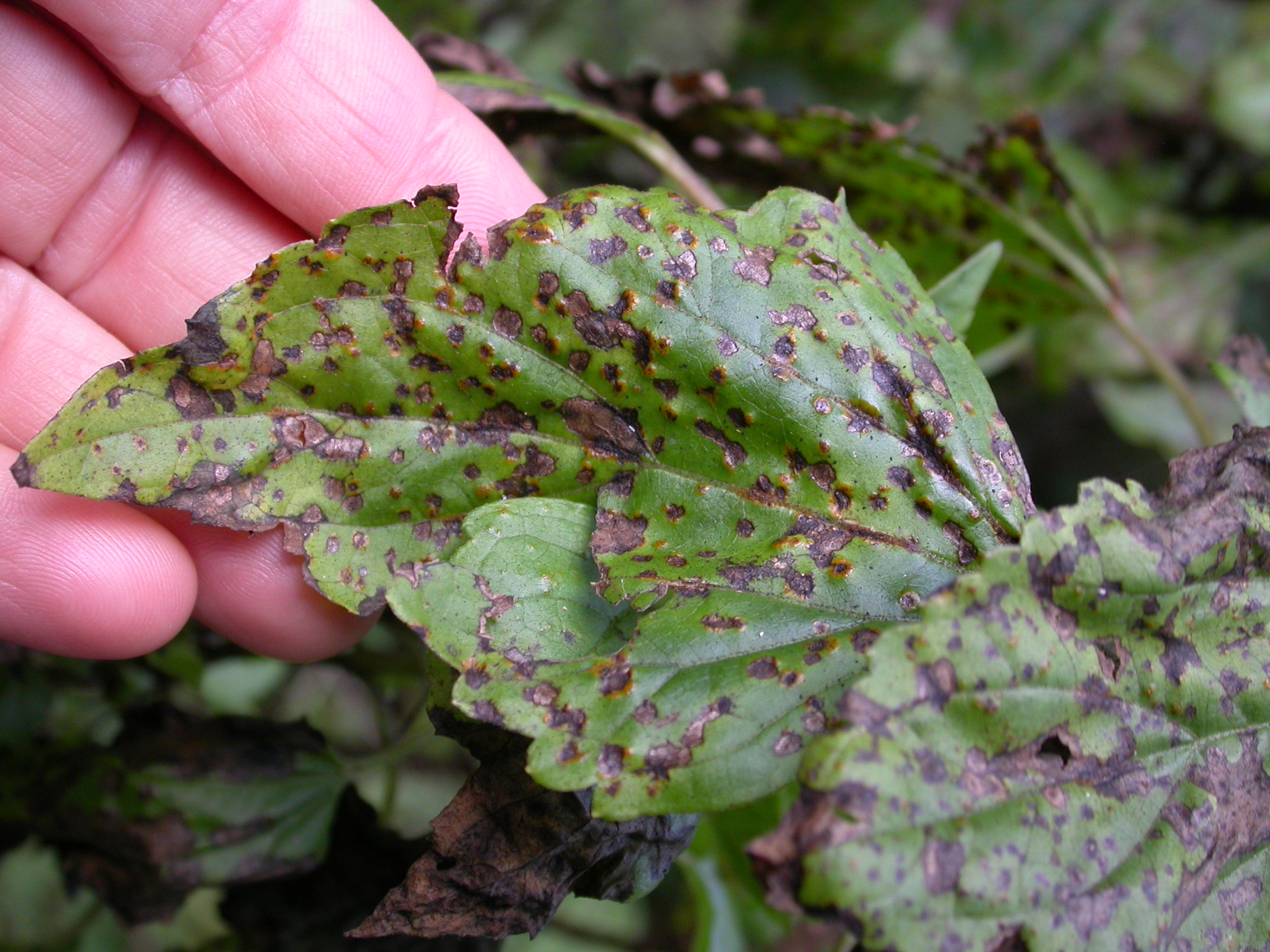
Symptoms caused by the Crofton weed rust fungus are sometimes associated with extensive necrosis.
The community-based release program in NSW continued in 2016 with support from the NSW Environmental Trust. Rust-infected potted plants, grown either in pasteurised soil or in rock wool, were distributed to managers of private or public land at field events or via the post. Managers were provided with simple guidelines on how to make the release and monitor establishment and spread of the agent, and expected to provide feedback. The program mass-produced and distributed rust-infected material that led to 159 releases of the agent across the range of Crofton weed in NSW.
The fungus was also released at 11 sites in national parks in south-east Queensland in 2015 with support from the Queensland Parks and Wildlife Service and on Lord Howe Island in July 2016 with support from the Lord Howe Island Board, through their weed eradication program funded by the NSW Environmental Trust.
The biocontrol agent: a rust fungus, Baeodromus eupatorii
The rust fungus, Baeodromus eupatorii, infects young leaves and stems of Crofton weed and has great potential to reduce competitiveness, reproduction and spread of the weed. B. eupatorii originates from Mexico, which is also the native range of the target weed, Crofton weed.
The rust fungus infects young leaves and stems of Crofton weed and has great potential to reduce competitiveness, reproduction and spread of the weed. It obtains nutrients and water from the host plant by establishing an intimate contact with living cells. Through this continuous absorption or diversion of assimilates from the host plant, the fungus becomes detrimental to plant development and reproduction. The fungus also destroys leaf tissue by producing fruiting bodies thus reducing the photosynthetic surface of the plant.
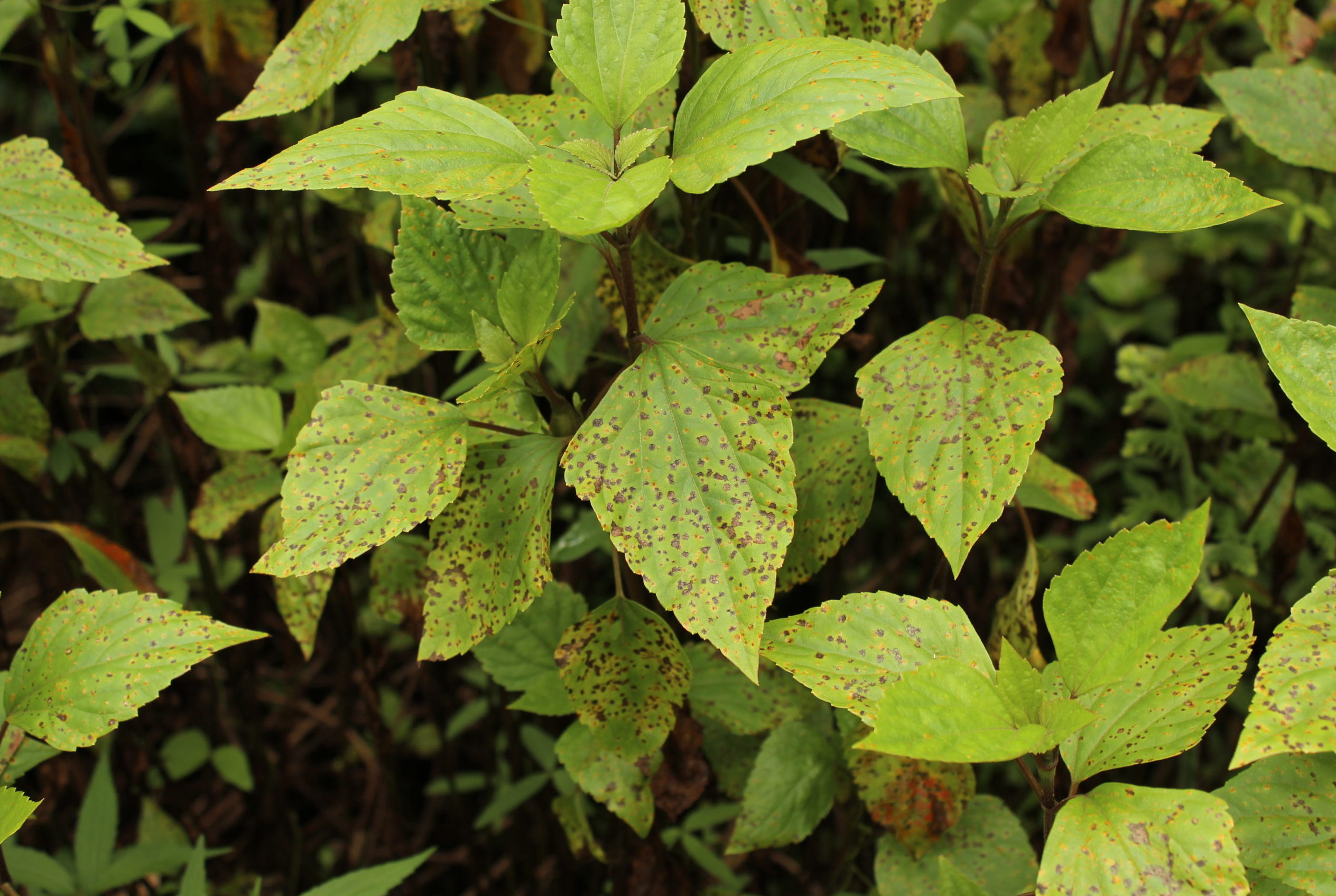
Leaves of Crofton weed infected by the rust fungus (photo: Karen Turner).
The fungus was approved for release in Australia in May 2014 and was extensively released across NSW in 2015 and 2016 in partnership with the community. The fungus has also been released in south-east Queensland and on Lord Howe Island. The fungus produces wind-borne spores and thus is expected to naturally spread from sites where it is established and thriving to other Crofton weed infestations. It has however, been affected by drought in the last few years and has disappeared from some sites where it established after the initial releases. As conditions improved, it should gradually recolonise those sites from other areas where it has been able to survive.
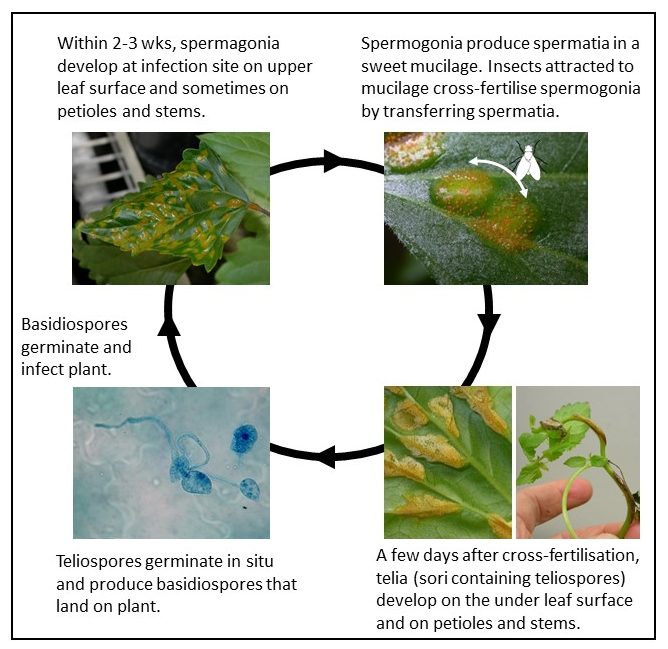
Life cycle of the Crofton weed rust fungus.
Material for releases is not available from CSIRO anymore
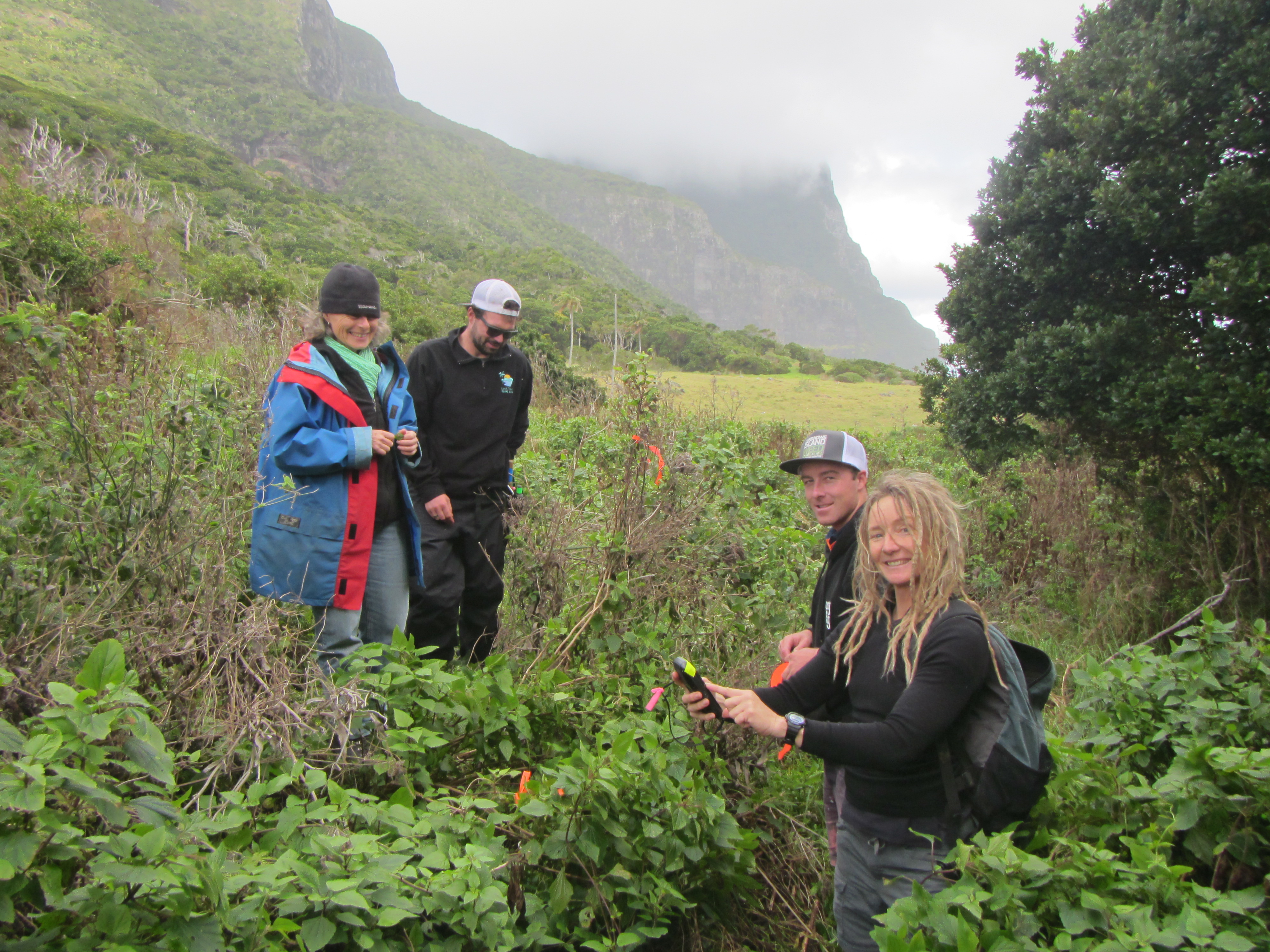
First release of the Crofton weed rust fungus on Lord Howe Island in July 2016.
The partnership with land managers and community groups has enabled the new biocontrol agent to be cost-effectively released at several locations across the entire range of Crofton weed in Australia. The Crofton weed rust fungus is now widespread across the weed’s range, but its prevalence and impact on Crofton weed infestations vary depending on prevailing weather conditions. It has been reported to disappear from sites during the summer, especially when conditions were harsh and very hot. It has however, resurfaced at many sites when rainfall and cool conditions have returned.
The Crofton weed rust fungus has shown that it can provide a sustainable tool to reduce populations of Crofton weed at sites where habitat and weather are conducive for infection. Continued infection of foliage by the agent should considerably reduce flowering in Crofton weed and thus the quantity of wind-borne seed produced. Such reduction in reproduction will decrease likelihoods of new Crofton weed infestations establishing.
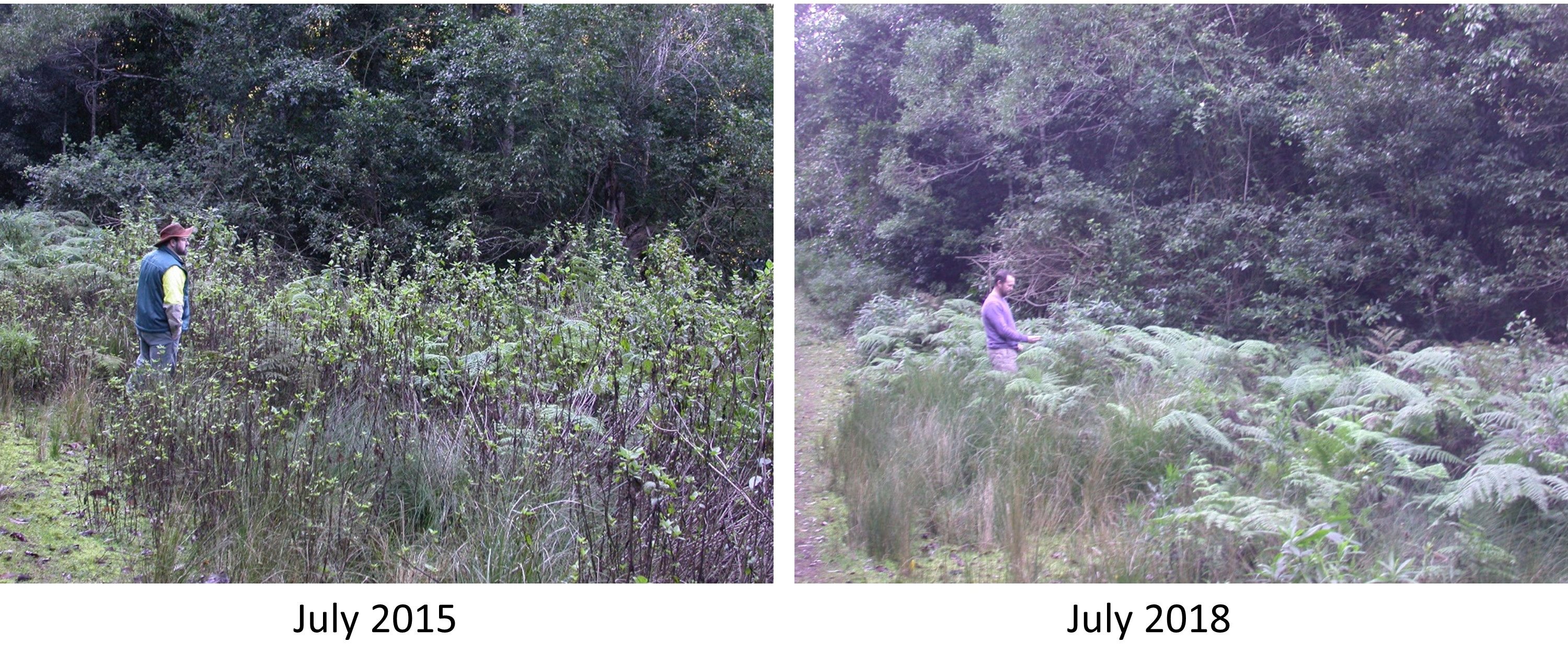
Impact of the Crofton weed rust fungus at Stafford’s Farm Trail in NSW. The fungus was released in October 2014 at this site.
To enhance natural spread , community members may consider redistributing the Crofton weed rust fungus to sites where it is absent using one of the three methods outlined in these guidelines: 1) potted plants method, 2) layering method and 3) transplanting method, providing they can access a site where the fungus is present.
Consult the attached document for a step-by-step pictorial guide for each redistribution method: Guidelines-redistribution-Crofton weed rust fungus
Locations where the rust fungus was confirmed as established in 2017 can been found under ‘Crofton weed biocontrol’ on the Australian Biocontrol Hub on the Atlas of Living Australia platform: https://biocollect.ala.org.au/biocontrolhub
Monitoring impact of the rust fungus
The easiest approach to monitor the long-term impact of the rust fungus on Crofton weed is to identify a suitable photo-point at the release site and take photos at the time of release and in subsequent years.
Consult the attached document for a guide to establish a photo-point for monitoring: Monitoring-Crofton weed rust fungus
Frequently asked questions
Will this rust fungus control Crofton weed?
The rust fungus should adversely impact Crofton weed populations over time through regular defoliation of plants, but will not eradicate them. It will enhance biological control of crofton weed by complementing the effects of two other biological control agents introduced in the 1950s: the fly ‒ Procecidochares utilis that causes galls on stems and the leaf spot fungus ‒ Passalora ageratinae that causes necrotic lesions on old leaves.
There is no single solution to deal with the Crofton weed problem in NSW. Consequently any improvement of biological control through the release of the rust fungus will be most welcome, particularly at sites where implementation of other control methods is inappropriate or impractical. However, biological control is not a silver bullet, but rather a complement to existing control techniques.
What is the difference between symptoms of the rust fungus and the leaf-spot fungus on Crofton weed?
The leaf-spot fungus (Passalora ageratinae), which was introduced in Australia in the 1950s, produces large necrotic lesions on older leaves of Crofton weed. In contrast, the rust fungus infects young leaves, and produces lesions that contains orange spores, with or without necrosis. Rust pustules that first appeared on young leaves can be seen on older leaves as the plant continues to grow.
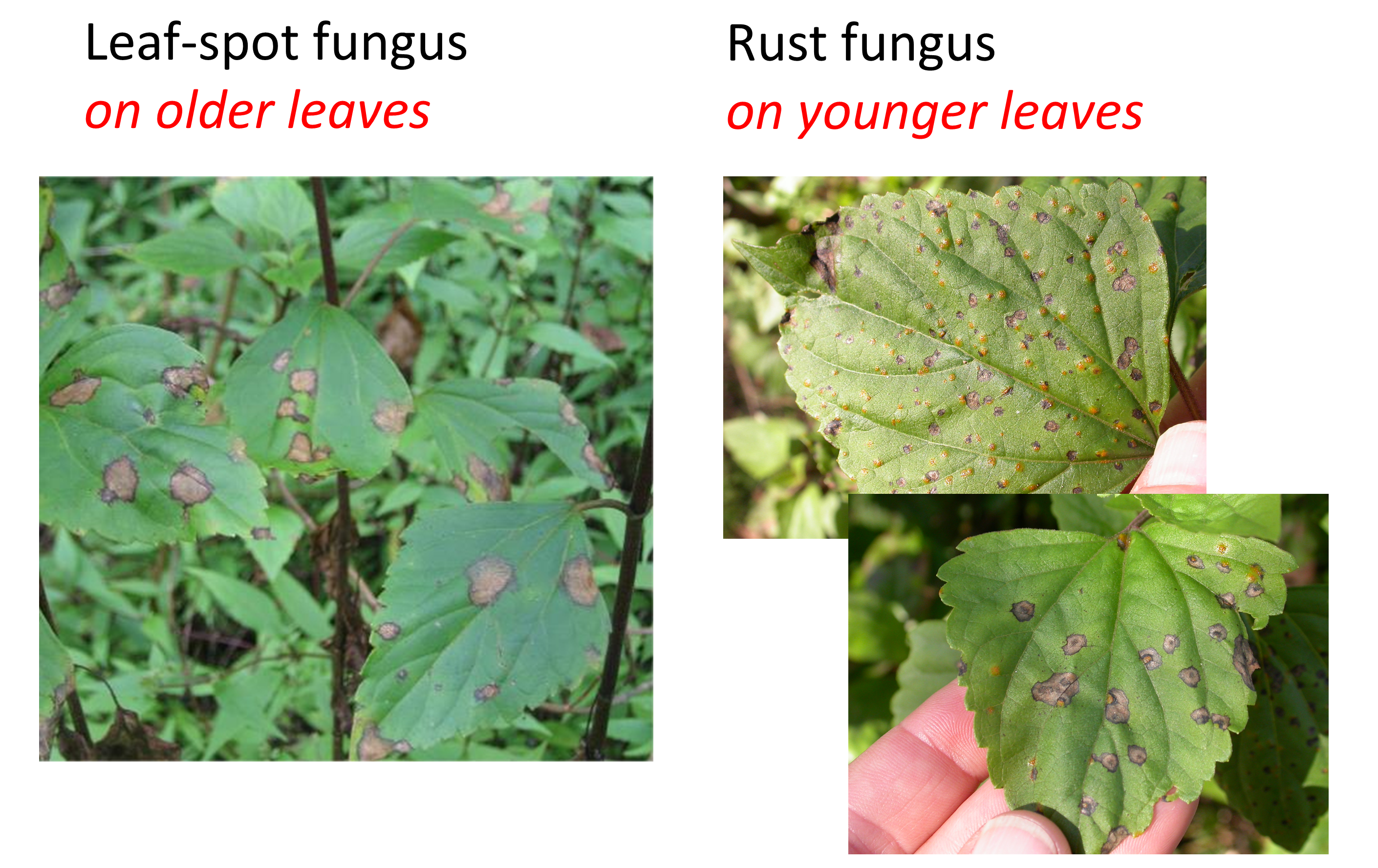
Is this rust fungus safe?
The rust fungus was thoroughly tested before approval was obtained in May 2014 to release it in the Australian environment. Results from host-specificity tests demonstrated that the rust fungus does not pose a threat to economic and native plant species.
What is a most suitable site for the rust fungus to thrive?
Sites with extensive and dense stands of actively growing Crofton weed that are not in full sun are ideal because the rust fungus prefers cool temperatures.
